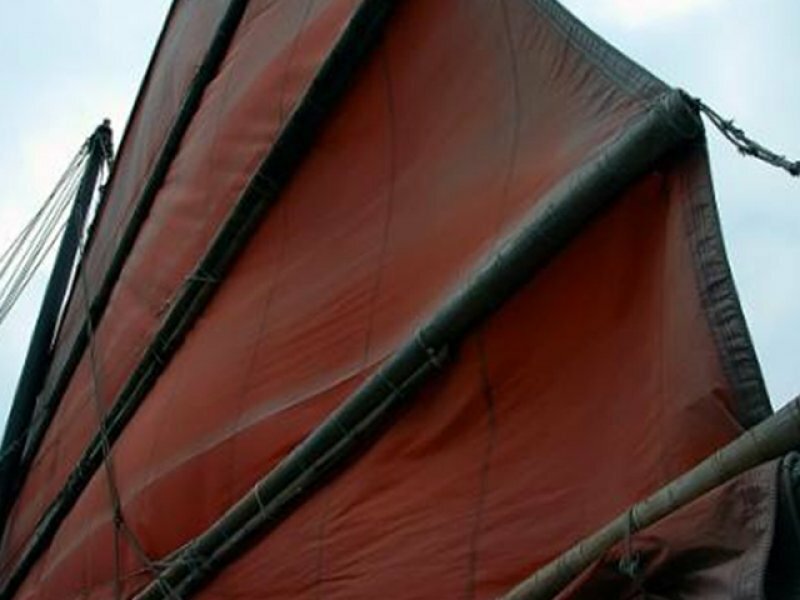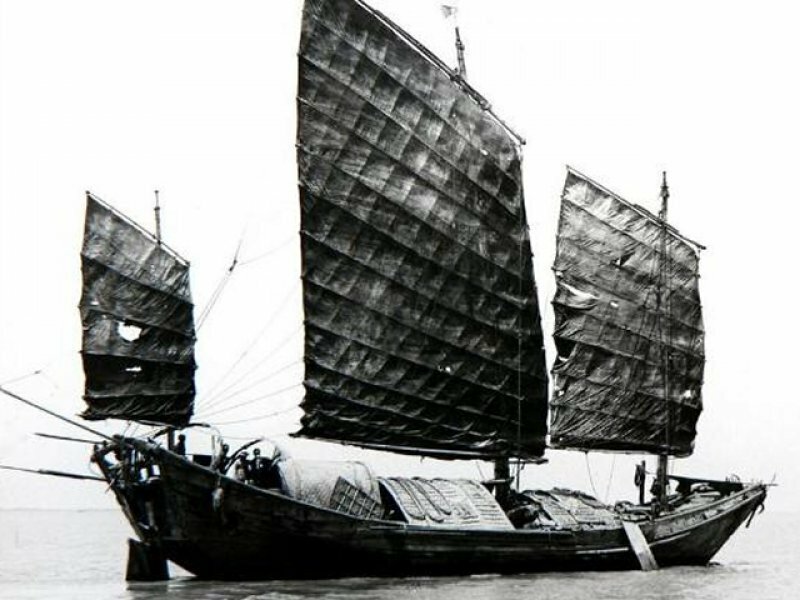Construction
The junk looks like an odd craft to sail the seas. Its sails look fragile and irregular and its blunt shape lacks a hydrodynamic form. The bow is too low, the stern too high, and the transom too broad. However, this is one of the most seaworthy vessels an ancient civilization ever put together.
The secret of the efficiency of the sails are the battens, often made out of sturdy bamboo. Some boats have six in their mainsail, others twenty, depending on the region where the junk is from. These battens keep the sail as flat as modern sails, not unlike in catamarans and sails of windsurfers. Therefore there is not a single traditional boat that is able to sail so close to the wind as the junk.
Another advantage with this ancient sail system is the easiness to reef the sail. When the sail is damaged the cut only runs until one of the battens, unlike the substantial damage that a cut can do in normal lateen sail.
Another feature that adds to the seaworthiness of the junk hull itself are watertight compartments. These enable the boat to stay afloat even when one compartment is flooded. Another remarkable naval engineering feature was the stern mounted rudder, which seems to have been one of the first in the world. It was already described by Chinese historians at the end of 12th century.
A junk does not have a keel, just like a Western flat bottom boat. To avoid slipping leeward on beam reaches the boats were equipped with a daggerboard, another invention that Western shipwrights did not come up with until many centuries later.

Junk on Saigon River, Vietnam, 2006 © Nguyen Ngoc Chinh




